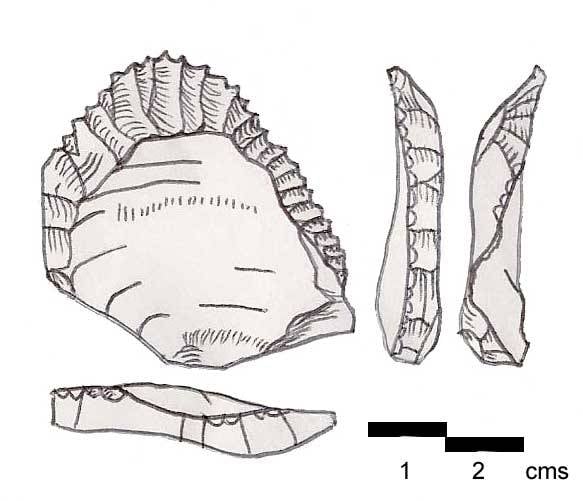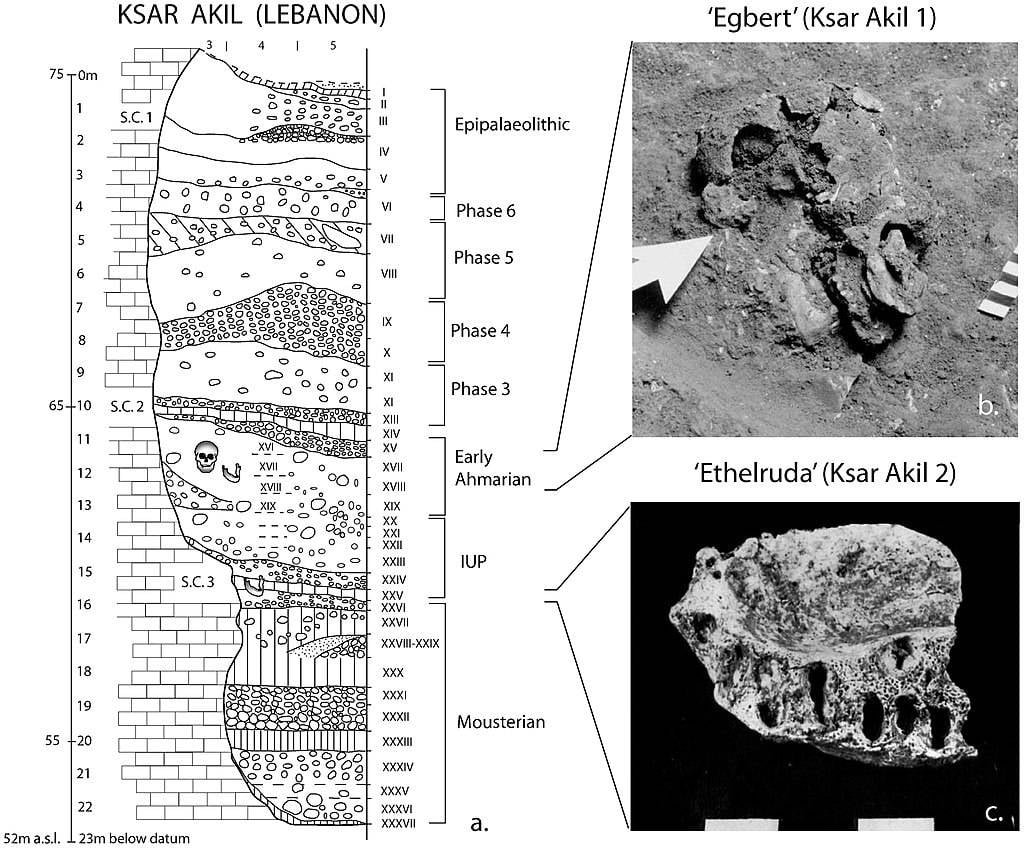Historical Snapshot: The Early Humans of Ksar Akil
In the early 20th century, different archaeologists uncovered a historic Stone Age cave north of Beirut. This cave, near Antelias, is said to have had human activity as long as 45,000 years ago. Excavations of the site, first in 1937 and last in 1976, revealed the presence of flint tools from the “Upper Paleolithic” age and even modern-like human remains. This site proved to have immense significance, as one of the earliest examples of “modernity” in Western Asia.

The Upper Paleolithic era dates to anywhere between 50,000 to 12,000 years ago. It was the last stage of the Old Stone Age, and saw the development of early forms of human behaviors such as farming and fishing. This era also saw the continued spread of “modern humans” from Africa towards the rest of the Earth’s continents, and the subsequent extinction of species such as the Neanderthals.
Ksar Akil was located on the Levant land bridge connecting Africa, Asia, and Europe, an area believed to be of specific “palaeoanthropological significance” because of its position at the forefront of early human expansion. At Ksar Akil, archaeologists were able to uncover modern human remains and early flint tools such as the Ksar Akil flake

One of the major discoveries in Ksar Akil included the skeleton of a young homo sapien, estimated to be around 7 to 9 years old, and possibly female. Ksar Akil 1, or Egbert, was found in 1938 by Jesuit archaeologist J. Franklin Ewing. The fossil was preserved relatively well, and was found under a pile of cobbles, which could indicate a deliberate burial. Another skull was found next to Egbert, which indicates that multiple burials could have been made at that location. Egbert is one of the earliest examples of a modern human.
Ksar Akil 1 was taken to the United States for further studying but the skull was eventually returned to the National Museum of Beirut, where it is now thought to be lost.
During a second excavation trip to Ksar Akil, the team found a deeper jaw remnant 15m into the cave. This indicates that the skull was older than Egbert, and probably belonged to the “Initial Upper Paleolithic” stage. Ksar Akil 2, or Ethelruda’s identity is subject to debate, with archaeologists unsure if the fossil belongs to the Neanderthal, homo sapien, or a hybrid species.
The fossil was thought to be lost, but was recently found in the storage of the National Museum of Beirut.

Another major find during the trips to this cave was the Ksar Akil flake. This flake is considered to be an early flint tool that was used in the Upper Paleothic era, and can be found today in the National Museum of Beirut, AUB’s Archaeology Museum, and the Museum of Lebanese Prehistory. It is oval shaped, with fine teeth on its edges.
Unfortunately, excavation at the site was interrupted by quarrying and gravel-making in the area in 60s, and subsequently by the outbreak of the Lebanese Civil War in 1975. Ksar Akil is one of only two caves found in the region with Early Upper Paleolithic and Initial Upper Paleolithic remains.
Sources and Further Reading
Fifty years after: Egbert, an early Upper Palaeolithic juvenile from Ksar Akil, Lebanon
More Like This
Historical Snapshot: Exploring Phoenicia’s Royal Purple Dye
Historical Snapshot: The Story Behind Lebanon’s B018 Night Club
1





